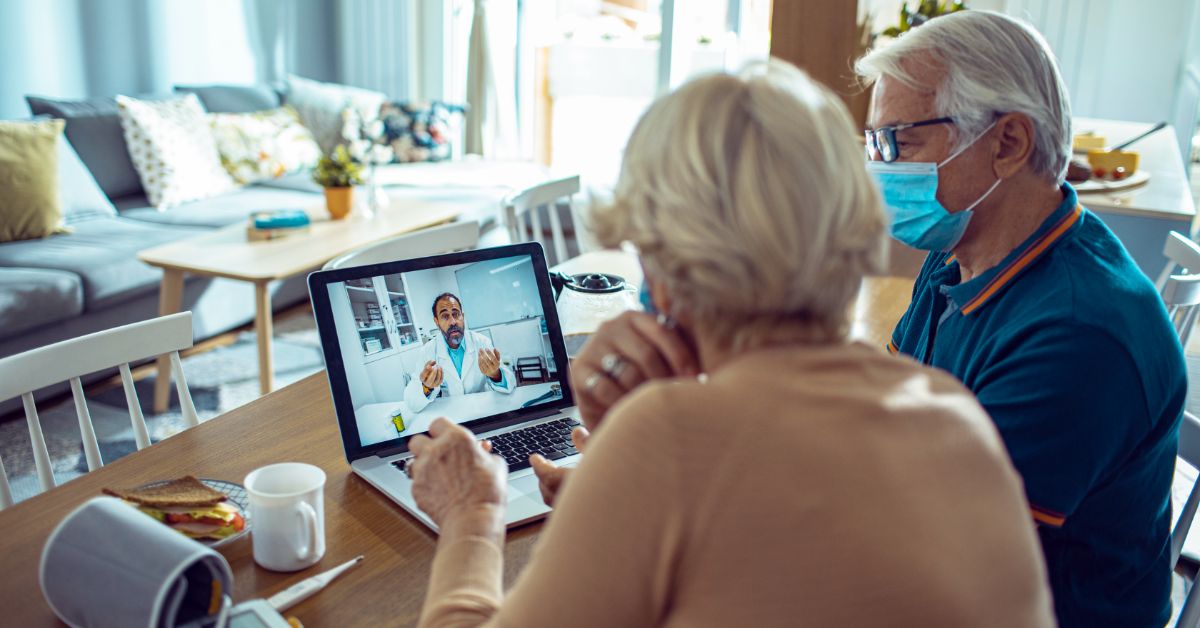When a grandmother can easily monitor her blood pressure and share with her doctor from her kitchen table, it signifies a big step in expanding care beyond the exam room. In addition to enabling patients with chronic conditions to play greater roles in managing their health, Remote Patient Monitoring (RPM) can improve patient/provider relationships, clinical outcomes, and practice efficiency. Have you considered encouraging more patients to use health monitoring devices?
The use of RPM is growing
As medical device technologies become easier for patients and more efficient in feeding health data into the EHR, RPM use has grown significantly. The global digital patient monitoring devices market was estimated at almost $63 billion in 2020 and is expected to expand due to the increased need. [i]
What is RPM?
RPM (Remote Patient Monitoring) allows a person to share their health data with their provider regularly. RPM refers to the prescribed mobile monitoring devices that transmit information between patients and their physicians. This method of healthcare delivery helps bridge the gap between traditional in-office care and the routine lives of people.Benefits for your patients and practice
When your practice can capture ongoing vital measurements such as blood pressure, temperature, or blood sugar, physicians can easily view patients’ data in real time to closely monitor trends, detect anomalies, and determine if the patient’s condition is controlled. They can also adjust treatments, care plans, and even lifestyle behaviors far more expediently.
Physicians can encourage patients to use health monitoring devices to:
- Gain more insights to achieve better outcomes
- Obtain vital data without the need for an in-person visit
- Document data to support clinical decisions in the EHR
RPM devices are particularly beneficial for individuals with chronic conditions. For example, people with diabetes benefit from knowing their blood sugar daily. Access to this information ensures their diabetes care plan is working optimally.[ii] This is just one of several examples where health monitoring with devices can significantly impact the treatment of some of the nation’s most serious health issues and support vital health tracking.
As these patients monitor their conditions, they increase their participation in managing their health, which naturally contributes to better outcomes. This also validates how RPM can improve patient/provider relationships.
What are the top use cases used in practices?
Chronic Condition Management: Chronic and/or mental health conditions account for 90 percent of the nation’s $3.8 trillion annual healthcare costs. These conditions are not only prevalent among aging baby boomers, but also the younger millennials.[iii] It is easy to understand why it is one of the most common use cases for RPM since patients typically have their vitals measured and are asked to attend routine doctor visits.
COVID-19 management: The pandemic increased demand for patients to have their vital signs monitored from the safety of their homes.
Post-Procedure monitoring: A blood pressure cuff allows a person, recovering from a cardiac procedure to measure systolic and diastolic blood pressure, to track their readings via a smartphone application.
Decentralized Clinical Trials: RPM enables study participants to collect/provide data remotely. This streamlines participant recruitment, enrollment, and data collection with a one-to-many connection, allowing shorter and more cost-effective clinical trials.
Depending on your patient population and their healthcare needs, you will need an RPM solution that delivers the level of efficiency required to improve clinical and operational outcomes.
Find the right solution
As with most health IT solutions, not all solutions are created equal, including RPM. Practices should evaluate the solution features and weigh the patient benefits. For example, if a practice selects a solution that supports multiple use cases and devices, as well as integrates with their telehealth platform, then the practice can:
- Empower patients to play an active role in their care, as they can gather and examine data from multiple monitoring devices with a single application
- Use a single telehealth platform to view RPM data and see patients virtually
- Reduce the cost of care
- Expand device choices for providers and patients
Summary
More patients are likely to embrace RPM devices as they become more convenient to wear and easier to use. As more providers become comfortable with the additional clinical insight, patient-generated data will likely expand to other data types, including lifestyle and wellness.
NextGen Healthcare has designed an RPM Toolkit to help clients take advantage of all the benefits home health monitoring offers. The toolkit can be found in the NextGen Healthcare Resource Library and contains an introduction video and brochure for patients, a comprehensive white paper on RPM, a demo video, FAQs for providers and staff, and a checklist for setting up an RPM program.
Get your toolkit now and empower patients to take charge of their health.
[i] https://www.grandviewresearch.com/industry-analysis/digital-patient-monitoring-devices-market
[ii] https://www. diabetes.org/healthy-living/medication-treatments/blood-glucose-testing-and-control/checking-your-blood-sugar
[iii] 5a Various studies have shown millennials have worse health than previous generations. Further, a 2019 study from the Blue Cross Blue Shield Health Index found one-third of millennials have a health condition that will lower their life expectancy and quality of life. And, when compared with Generation Xers at the same age, older millennials had a significantly higher incidence of several common health conditions, including Type 2 diabetes, high cholesterol, hypertension, and major depression. https://www.advisory.com/daily-briefing/2020/01/17/milennialsweekly-line 5b 2 Health and Economic Costs of Chronic Diseases, CDC, www.cdc.gov/chronicdisease/about/costs/index.htm 5c 3 Growth Opportunities in the US Remote Patient Monitoring Market, Forecast to 2023, The Technology Can Improve Patient Outcomes, Reduce Readmissions, and Lower Costs, March 2019, Global Transformational Health Research Team, Frost & Sullivan





